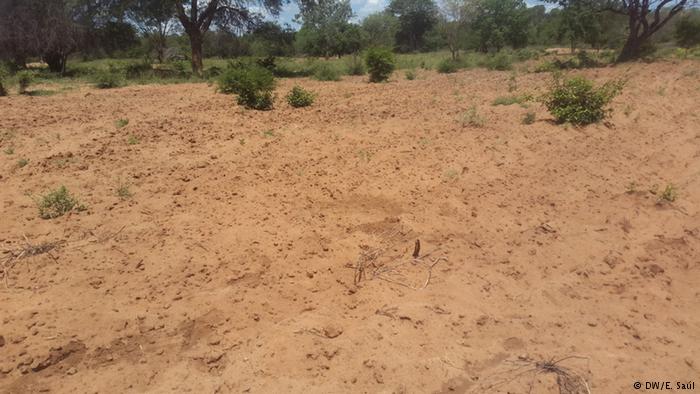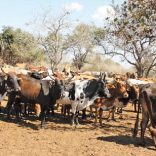Mozambique may be banned from international forest trade - AIM
Despite a successful harvest, half a million Mozambicans are facing hunger

DW / Drought in Gaza province in southern Mozambique ( File photo, 2016)
The Institute for Disaster Management (INGC) says that more than 500,000 people living in 19 districts of four Mozambican provinces face hunger, and that it has food stocks to support families for only less than a month – a scenario that runs counter to the government’s accounts which state that the balance sheet for the first season of the 2017-2018 agricultural year was positive.
According to the head of Food Security at the Ministry of Agriculture and Food Security, Hiten Jantitlal, overall national production exceeded the targets set. “In the overall picture for all crops, we have grown above 100 percent – about 104 percent of what was planned.”

Irregular rains, floods and caterpillars
But the government has an explanation for why the 19 districts failed to meet agricultural production targets.
“Irregular rains, but also some floods that in the northern region – and we had caterpillars. More specifically, the Fall Army Worm, which has affected the maize harvest for two years now.”
The National Institute for Disaster Management (INGC) is already mobilising funds from its partners in order to help the poorest families, according to its spokesman, Paulo Tomás.
“From the reserves that INGC and its partners have at the moment, assistance for at least another month may be possible, which will allow us to mobilise resources and provide assistance to these families,” he said.
The affected provinces are Gaza and Inhambane in the south, and Sofala and Tete in the centre of the country. The latter, according to INGC, is in dire need of help.
“The biggest concern is Tete province, where we have about 34,000 families already in this situation, followed by Gaza province. We also have a water and sanitation component in the plan,” Tomás said.
Drought aggravates risk of food insecurity
Every year, Mozambique faces severe floods and drought, which compromises agricultural production. Already last May, a hunger warning network announced that parts of central and southern Mozambique would face major difficulties getting food from June on because of drought.
Although not at the emergency levels of 2016, there are signs of scarcity in the subsistence agriculture on which most Mozambicans depend.
“Due to a failed agricultural campaign of 2017-18, the poorest households do not have access to income at the usual levels in Gaza, Inhambane, north of Maputo, south of Tete and parts of the provinces of Manica and Sofala,” said the Early Warning System of Hunger Network, created by the United States Agency for International Development (USAID) in 1985 to support decision-making in the management of humanitarian support.
Food insecurity is classified according to a five-level scale: minimum risk, stress, crisis, emergency and hunger.












Leave a Reply
Be the First to Comment!
You must be logged in to post a comment.
You must be logged in to post a comment.